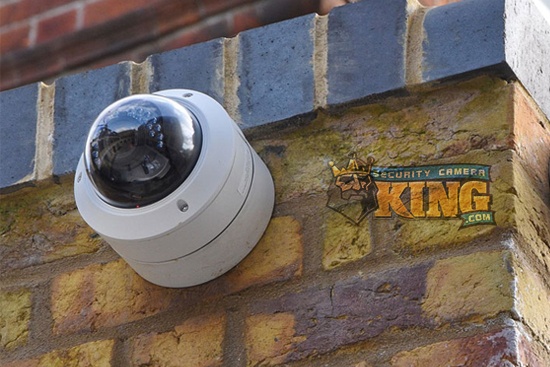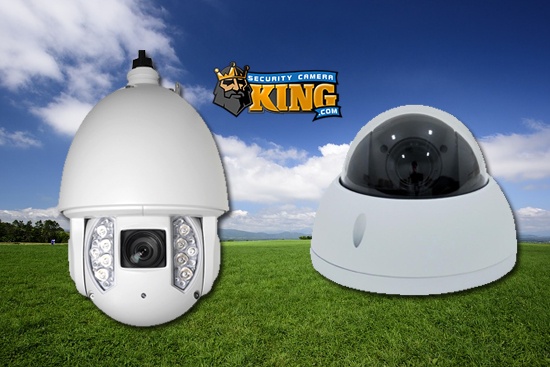Coax Video Signals by SCK
Hey everyone, Joe here with an amazing article and Video covering the differences between the Four available COAX Video Signals! These different signals are CVBS, AHD, CVI, and TVI. What do those mean, how do they fit into the CCTV picture, and why are there four different ones? Today we aim to answer these questions for you to provide a clearer answer and a better idea of COAX camera technology. The first thing to know is that, as hinted above, these signals are related specifically to COAx cameras and DVRs and don’t play a role or factor in IP camera technology.
This is because COAX cameras don’t even communicate their video data to a DVR the same way IP cameras do to an NVR. While IP cameras us a networking cable such as cat5e or cat6 ethernet to communicate already encoded video file to an NVR for writing, COAX cameras utilize a BNC or ‘coax’ cable to send raw video data to a DVR which encodes it at the side of the recorder, as well as writes it to the disk.
For a long time, these cameras utilized an analog video signal, and for this reason, you might hear many people today still verbally refer to coax cameras as ‘analog cameras’. However, this isn’t entirely accurate because modern COAX cameras transmit using Digitized Coax Video Signalsl over the BNC cable, able to carry much better quality resolution images and video than say a similar analog signal like they used to. The main reason these other signal types had to be created, was to allow COAX cameras to start keeping up with their IP counterparts. Generally, IP systems- also known as NVR’s or network video recorders, are better and processing and dealing with resolutions higher than 1080p (or 2 megapixels) such as 4mp, and 8mp (4k).
Not every single brand of CCTV equipment has its technology designed to utilize all of the avialable Coax Video Signals. The overwhelming majority of our COAX cameras themselves are designed to use, or more accurately, swap between all four of the Coax Video Signals. While many other brands of cameras can only do one or two of the available video signal types. Most cameras are capable of fully analog CVBS, which we will describe more below. Always talk to a sales Pro to ensure compatibility before purchase so you can guarantee the product you’re interested in will work correctly with your existing hardware or other prospective purchases.
With that said let’s dive in and answer “what are the video signal types?”
What are the video signal types? I – CVBS
One of the oldest available video technologies around, CVBS stands for composite video baseband signal. CVBS is a completely analog signal, and although is still available on most cameras as a low-end option, is essentially obsolete compared to the other types. Cameras today are rated in pixel resolutions, but for a time they were rated in TV lines. CVBS was commonly used with 480 TVL image quality, comparable to 480i/p standard definition resolution today.
What are the video signal types? II – AHD
As digital video surveillance began to grow in the 2010’s CCTV systems needed analog counterparts to compete with the newer HD resolutions that were making IP cameras a better choice, without having consumers need to upend their existing cabling. Thus Analogue High Definition- or AHD- was created.
AHD supports analog signals, but for high definition resolution standards such as 1, and 2 megapixels (aka 720p and 1080p).
What are the video signal types? III – TVI and CVI
There are currently two major competing video signal types for Digital video over coax. The First, is the Transport video interface also known as TVI. TVI is able to do resolutions up to 1080p very well, via digital signal over analog cable. TVI is a universal technology found on most modern coax cameras you can find for sale today, both that we carry and elsewhere.
The second is CVI, or composite video interface. Both transmit a digital video signal over an analog BNC cable -however- only CVI is capable of hitting up to 8 Megapixels using today’s technologies. CVI technology is unique to our Elite or “E” series cameras and DVRs.
Both of these technologies are available on the vast majority of our Elite Series cameras, so it’s important that before you buy, you always check with one of our sales pros to ensure compatibility between your DVR and any prospective camera purchases. Remember not all of these technologies play nice together, you’ll want to be 100% sure what you purchase is going to work, and work the way you want!
Thanks for joining us today as we addressed the question “What are the video signal types?” for more information on these, or any other product availability or compatibility questions, give our sales pros a call at 561-288-5258, and until next time- stay safe!
Thanks for reading our article today about Coax Video Signals. If you have any questions about the products we carry, what services we offer, or compatibility with the hardware you might have, don’t hesitate to give one of our highly trained sales pros a call! That number is 561-288-5258! Until next time, Stay Safe!
Related: What’s the difference between DVR and NVR?
Related: What’s the difference between H264 and H265?
Related: IP PTZ Security Cameras – All There is to Know
Related: Resolution, and why does it matter?
Related: What are active deterrence cameras?
Find Us On: Facebook | Twitter | YouTube












